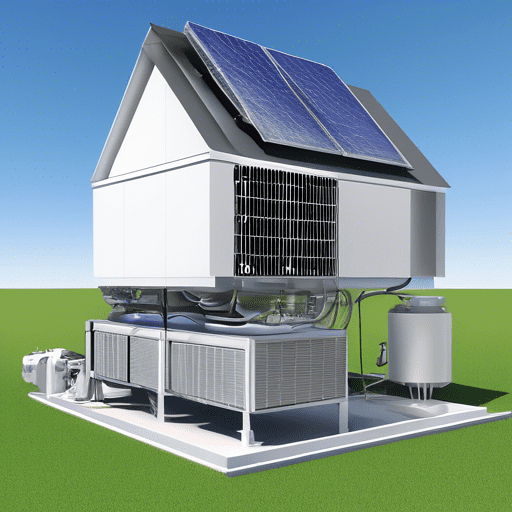Conditional Adult Use Dispensing Organization License application for Illinois is out Qualified businesses which do not currently hold a Medical

Ground-source heat pumps (GSHPs) are an innovative technology that can provide heating and cooling for buildings in an energy-efficient and sustainable way. However, to achieve optimal performance, it’s essential to use innovative HVAC design strategies that meet the requirements of MEP design. In this blog post, we’ll explore some of the most innovative HVAC design strategies for ground-source heat pumps and how they can be implemented in new and existing buildings.
Ground-source heat pumps (GSHPs) are a type of heat pump that uses the earth’s natural heat to provide heating and cooling for buildings. They work by pumping fluid through an underground, closed-loop network of pipes. During the winter, the fluid pulls heat from the soil and transports it to the building, providing heat. During the summer, the fluid removes heat from the structure and returns it to the earth for cooling. GSHPs are an energy-efficient and sustainable alternative to conventional heating and cooling methods.
To achieve optimal performance from GSHPs, it’s essential to use innovative HVAC design strategies that meet the requirements of MEP design. These strategies can help optimize the performance of GSHPs, reduce energy costs, and improve the overall sustainability of buildings. Some of the most innovative HVAC design strategies for ground-source heat pumps include:
Geothermal boreholes are a type of ground-source heat pump that uses vertical boreholes to extract heat from the earth. They are an innovative HVAC design strategy that can be used to optimize the performance of GSHPs. Geothermal boreholes are more efficient than horizontal loops because they can extract heat from deeper in the earth, where temperatures are more stable. They can also be used in areas where space is limited, making them an ideal solution for urban areas.
Hybrid systems are another innovative HVAC design strategy that can be used to optimize the performance of GSHPs. Hybrid systems combine GSHPs with other renewable energy technologies, such as solar panels or wind turbines. By combining these technologies, hybrid systems can provide more energy-efficient and sustainable heating and cooling solutions for buildings.
Variable refrigerant flow (VRF) systems are an innovative HVAC design strategy that can be used to optimize the performance of GSHPs. VRF systems use a refrigerant to transfer heat between the indoor and outdoor units of a building. They are more energy-efficient than traditional HVAC systems because they can adjust the amount of refrigerant flowing through the system based on the heating and cooling needs of the building.
Ground-source heat pumps are an innovative technology that can provide heating and cooling for buildings in an energy-efficient and sustainable way. To achieve optimal performance from GSHPs, it’s essential to use innovative HVAC design strategies that meet the requirements of MEP design. Some of the most innovative HVAC design strategies for ground-source heat pumps include geothermal boreholes, hybrid systems, and variable refrigerant flow systems. At InnoDez Design and Engineering Company, we provide MEP design and engineering services that can help you implement these innovative HVAC design strategies in your building. Contact us today to learn more!
About Author
InnoDez